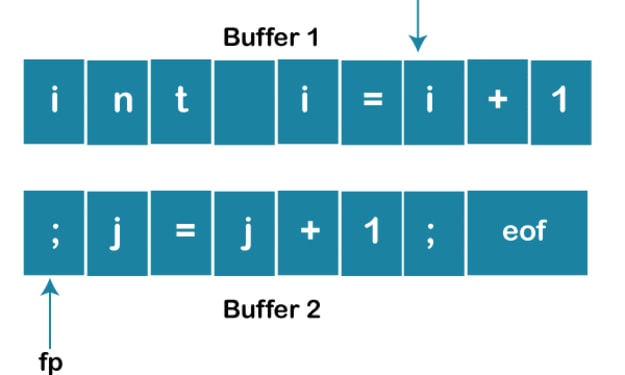Understanding Forex Candlesticks:
A Comprehensive Guide

Candlestick patterns are an essential tool for Forex traders. They provide valuable insights into market trends and help traders make informed trading decisions. By understanding the different types of candlestick patterns and how to interpret them, traders can improve their accuracy and profitability.
Before we embark on this enlightening journey, let’s acknowledge some influential works that have shaped our understanding of candlestick patterns:

This seminal work serves as a bridge between ancient wisdom and modern trading practices. In its second edition, this book delves into the intricacies of Japanese Candlestick Charting Techniques, providing a contemporary perspective on the ancient investment techniques of the Far East. By exploring traditional methods in the context of current market dynamics, this guide equips traders with a deep understanding of candlestick patterns and their applications in the fast-paced world of Forex trading.
Japanese Candlestick Charting Techniques: 3 in 1- The Ultimate Beginner’s Guide

+ Simple and Effective Strategies+ Advanced Strategies and Methods to Enhance Technical and Market Analysis
A comprehensive resource catering to traders of all levels, this book is a treasure trove of knowledge. It begins with the basics, offering beginners a solid foundation in candlestick patterns. As the reader progresses, the book unveils simple and effective strategies for practical application. Moving further, advanced techniques are introduced, enhancing technical and market analysis. This all-in-one guide empowers traders with a holistic understanding of Japanese Candlestick Charting Techniques.
„Candlestick Trading: Mastering the Art of Japanese Candlestick Charting“

Candlestick Charting Explained Workbook: Step-By-Step Exercises And Tests To Help You Master Candlestick Charting
by Gregory Morris
Gregory Morris, a seasoned expert, delves into the art of candlestick charting with a focus on mastering the intricacies of this ancient technique. By emphasizing practical applications, Morris equips traders with actionable insights derived from candlestick patterns. This book not only imparts theoretical knowledge but also guides readers in applying these patterns in real-world trading scenarios, making it an indispensable resource for traders looking to refine their skills.
Candlestick charts are a type of technical analysis chart that originated in Japan in the 18th century. They are used to visualize price movements over a given period of time, typically a day, week, or month. Candlestick charts are made up of individual candlesticks, which are represented by colored rectangles. The body of the candlestick represents the difference between the open and close prices. The upper and lower shadows of the candlestick represent the high and low prices, respectively.
Candlestick charts are popular among Forex traders because they provide a lot of information in a single chart. By analyzing the size and shape of candlesticks, traders can identify key support and resistance levels, identify trend reversals, and confirm existing trends.
II. History of Candlestick Charts
Candlestick charts were invented by Munehisa Homma, a Japanese rice trader, in the 18th century. Homma used candlestick charts to analyze the rice market and develop trading strategies. Candlestick charts quickly became popular among other Japanese rice traders, and eventually spread to other financial markets around the world.
Candlestick charts were first introduced to the West in the late 19th century by Charles Dow, the co-founder of the Dow Jones Index. Dow popularized candlestick charts among Western traders, and they have since become an essential tool for technical analysis in all financial markets, including Forex.
III. Anatomy of a Candlestick
A candlestick is made up of three main components: the body, the wick, and the shadow.
Body: The body of the candlestick represents the difference between the open and close prices. A bullish candlestick has a green body, while a bearish candlestick has a red body.
Wick: The wicks of the candlestick represent the high and low prices. The upper wick represents the high price, while the lower wick represents the low price.
Shadow: The shadows of the candlestick are also known as tails. They represent the range between the open/close price and the high/low price.
IV. Common Candlestick Patterns
There are many different types of candlestick patterns, but some of the most common include:
Bullish: Hammer, Inverted Hammer, Bullish Engulfing, Piercing Line, Morning Star
Bearish: Shooting Star, Hanging Man, Bearish Engulfing, Dark Cloud Cover, Evening Star
Neutral: Doji, Spinning Top, Star
V. Interpretation and Analysis
Traders interpret candlestick patterns to identify potential trading opportunities. For example, a bullish candlestick pattern forming at a key support level may indicate that a trend reversal is imminent. Traders can then use this information to enter long positions in anticipation of rising prices.
It is important to note that candlestick patterns are not foolproof and should not be used in isolation. Traders should always consider other technical indicators and market factors before making trading decisions.
VI. Trading Strategies Using Candlesticks
There are many different trading strategies that can be used in conjunction with candlestick patterns. Two popular strategies include:
Pin Bar Strategy: The pin bar strategy is a trading strategy that uses pin bar candlesticks to identify potential trading opportunities. A pin bar candlestick is a candlestick with a long wick and a small body. Pin bars are often seen as reversal signals, and traders can use them to enter long or short positions depending on the direction of the wick.
Doji Strategy: The doji strategy is a trading strategy that uses doji candlesticks to identify potential trading opportunities. A doji candlestick is a candlestick with a very small body or no body at all. Dojis are often seen as indecision candlesticks, and traders can use them to enter long or short positions depending on the location of the doji in relation to previous candlesticks.
VII. Pitfalls to Avoid
There are a few common pitfalls that traders should avoid when interpreting candlestick patterns:
Over-reliance on candlestick patterns: Candlestick patterns are a valuable tool, but they should not be used in isolation. Traders should always consider other technical indicators and market factors before making trading decisions.
False signals: Candlestick patterns can sometimes generate false signals. This is why it is important to confirm candlestick patterns with other technical indicators and market factors before entering a trade.
Lack of experience: It takes time and practice to learn how to identify and interpret candlestick patterns accurately. Traders
Unraveling the Candlestick Mystique





Comments
There are no comments for this story
Be the first to respond and start the conversation.